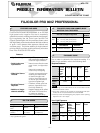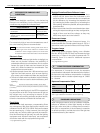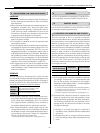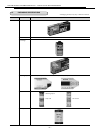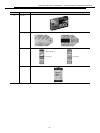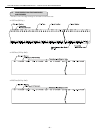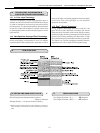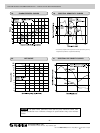
– 3 –
FUJICOLOR PRO 800Z PROFESSIONAL • FUJIFILM PRODUCT INFORMATION BULLETIN
8. UNPROCESSED FILM HANDLING/STORAGE
HANDLING
• Expose film before the expiration date indicated on
the film package and process as soon as possible
after exposure.
• When removing film stored at low temperatures (in a
refrigerator or freezer, etc.), allow it to reach room
temperature before opening it. Opening film while it
is still cold may cause condensation to form on the
film surface, causing color changes or the emulsion
to become more susceptible to scratches.
• Roll film should be loaded and unloaded quickly and
away from direct sunlight.
• Film loaded in cameras should be exposed and
processed promptly.
• X-rays inspection machines used to inspect checked-
in baggage at airports can cause fogging of film. Put
both exposed and unexposed film into carry-on
baggage (preferably in a transparent plastic bag or
a net bag that allows the film to be seen). Because of
the increasing number of airports using strong X-ray
machines for carry-on baggage, it is recommended
that you remove film from your carry-on baggage and
request a visual (manual) inspection of your film.
• Film fogging may occur near X-ray equipment used
in hospitals, factories, laboratories and other places
where radiation is used. Always keep film away from
sources of radiation.
STORAGE
Storing exposed or unexposed film under hot and
humid conditions may adversely affect the speed, color
balance and physical properties of the film. Although it
is best to store film at a low temperature, for practical
purposes, film should be stored as follows:
Storage Period with
Temperature Relative Humidity
Almost No Change
More than 20 years Below 10°C30%–50%
10–20 years Below 25°C30%–50%
Store at a place (cool and dark)
away from direct sunlight or high
temperatures and humidity.
Store at 10°C (50°F) or below
Short-term
Storage
Long-term
Storage
9. PROCESSING
This film is designed for processing by Process CN-41
or its equivalent, as well as Fujifilm Process CN-16.
10. CONTROL STRIPS
Use FUJICOLOR NEGATIVE FILM CONTROL STRIPS
to manage processing performance.
11.
PROCESSED FILM HANDLING AND STORAGE
Since the purpose of film is to provide a long-term
record of memorable events, as much effort as possible
has been made to use materials that exhibit the least
amount of change over time, but the effects of light,
heat, atmospheric oxygen, contaminant gases, humidity
and mold cannot be completely avoided. It is possible,
however, to minimize change in the photographic
image or base material by maintaining appropriate
storage conditions, such as those used by museums
and art galleries. Temperature and humidity control is
the most important key to minimizing the change that
occurs in film. Films stored in the dark under the
following conditions may be expected to show almost
no change over time.
(1) Color negative film should be inserted into sleeves
for storage. Furthermore, it is recommended that
film, as well as prints, be placed into non-airtight*
containers made of paper, plastic**, or metal designed
for the storage of photographs.
* To prevent film base (especially TAC base) decomposition,
it is essential that the container or case be allowed to air
out during one dry day each year.
** Polyester, polystyrene, polyethylene, polypropylene, etc.
(2) Processed film should be stored at a place as far
away as possible from high temperatures, direct
sunlight and other strong light and direct illumination.
The following conditions are not desirable for the
storage of film and should be avoided in the case
of long-term storage:
• New building materials, newly manufactured furni-
ture, paints and bonding agents may produce gases
which could affect photographic film. Do not store
film, lightproof boxes containing film or cameras or
film holders loaded with film near these materials.
• Film should be sealed in plastic bags* prior to cold
storage When taken out of cold storage, film should
be allowed to reach room temperature before open-
ing by letting it stand over 3 hours (for refrigerated
film) or over 6 hours (for frozen film).
* Polyester, polystyrene, polyethylene, polypropylene, etc.
• Storage in a closet lying against a wall that is
exposed to cold, outside air (where condensation
may form).
• Storage in an attic or on top of a closet or cabinet
near the ceiling (where high temperatures may
form).



